JET, JCI, and Terraplan to Build Eco Community Development in Bangladesh
By Bustler Editors|
Monday, Jan 9, 2012

Related
The collaboration of three Toronto-based firms, JET Architecture, JCI Architects, and Terraplan Landscape Architects, has won the commission to build the "Shobuj Pata" (Green Leaf) Eco Community Development in Dhaka, Bangladesh.
Project description from the architects:
The landmark “Shobuj Pata” (Green Leaf) Eco Community Development by Rupayan Housing Estate Ltd., one of the largest developers in Bangledesh, will be an oasis with green trees, plants and vegetation. This sustainable garden city of the future will be located on the outskirts of Dhaka, the capital of the Bangladesh. Named after “Green Leaf” in Bengali, the construction of Shobuj Pata garden city begins in 2012. The project will be ready to house 10,000 people in 2015, with habitable space for 2300 – 2400 dwelling units and convention centre, mosque, retail, school, etc. Green Leaf will become a livable low-carbon community incorporating landscape elements with architecture.
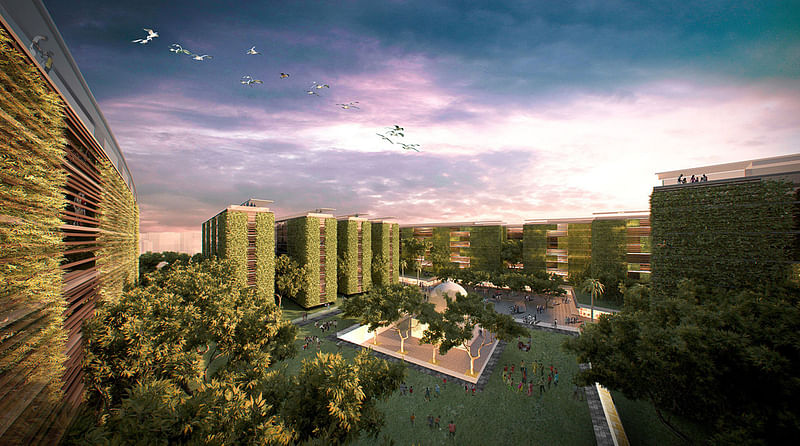
JET Architecture was invited by JCI Architects along with Terraplan Landscape Architects, to joint venture in the design of the Green Leaf project. After winning the commission earlier in 2011, on December 16th, 2011, the final negotiations were completed to enable the project to move forward quickly. The team will be working together, helping Bangladesh to design a sustainable community with an innovative green concept. Green Leaf is green landscape architecture and built form which takes full advantages of the local natural resources to create a hybrid habitable space combining architecture and nature. The concept is inspired by adopting current and green innovative technology to make the design construction economic and feasible.
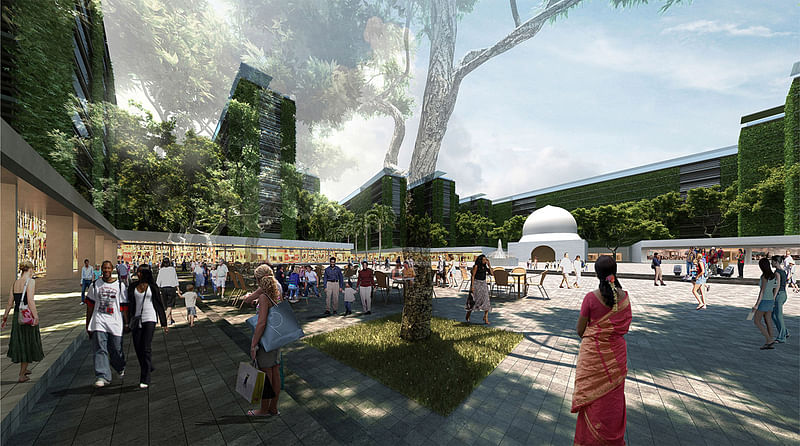
Bangladesh is a naturally lush green country with abundant rainfall every year. It is actually the country with the highest annual average rainfall in the world. Due to the hot and humid climate, a heat island effect occurs naturally in Dhaka. In order to deal with these extreme conditions, local ecology, micro climate and natural environment must all be key architectural influences during the design stage. Another challenge in Green Leaf is to find the balance by combining passive and technologically sustainable strategies in order to achieve high energy efficiency and performance within a high density atmosphere. The design team has found the perfect solution to form the complex by designing the building envelope with vernacular textures and vegetation. Green Leaf’s open-air architecture becomes an extension of the natural landscape, where interior and exterior spaces become interchangeable. The façade has used local vegetation as the design element to bring Bengali landscape into the heart of the built form, which stretches from the ground up to the rooftops.

To direct rainwater runoff away from buildings, and to prevent water overflow, bioswales are incorporated along the street edges throughout the ground plane. The bioswales also act as a rainwater filtration system retaining excess water for irrigation of the gardens and parks within the development. In the dry seasons, these water featured areas can function as additional water recreation space. In case of excessive storm water, green roofs are designed to mitigate the runoff and assist water and air purification. Furthermore, these systems can also reduce overall building energy consumption and moderate the urban heat island effects. The green wall acts as an air filtration system and creates its own microclimate which mitigates heat gain in the units as well as reducing both indoor air and outdoor radiated temperature. Reinforcing the idea of cross-ventilation, the thin profile and shallow floor plates which align with the local main wind direction generate a stunning configuration and provide opportunities for natural daylight to be accessible on both sides of the units.
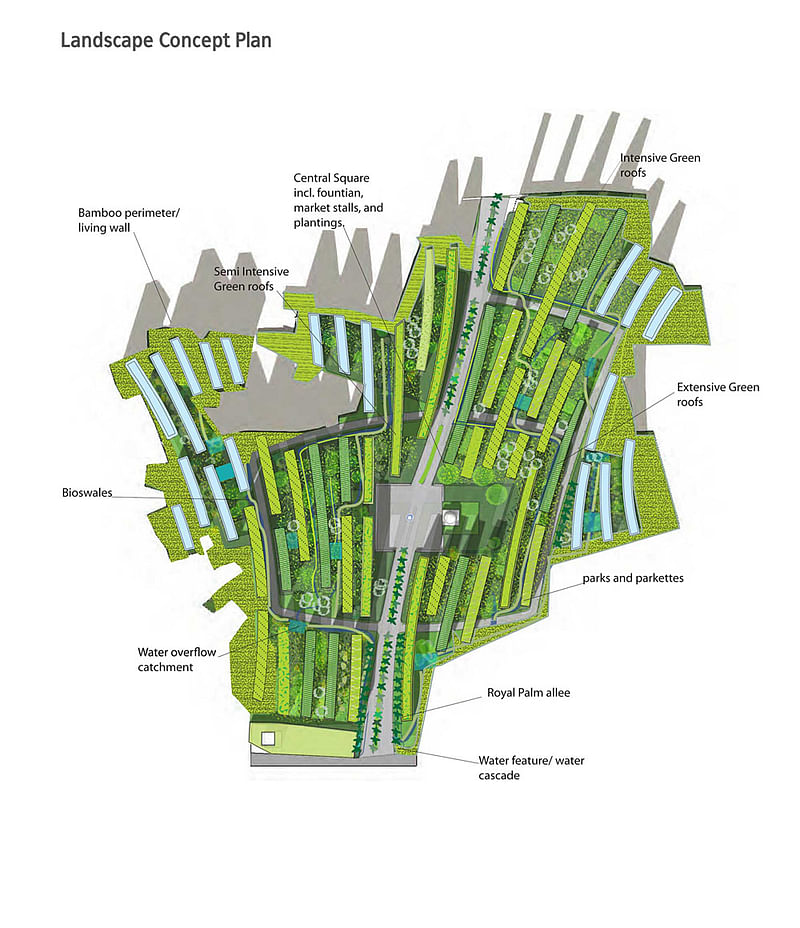
Green Leaf is not only acting as natural demarcation for spaces and activities; the various vegetated landscapes also create a green network that reconnects the urban population with the natural landscape of Bangladesh through a system of parks, paths and open public spaces. The planting species include fast-growing trees which create a comfortable microclimate for residents and visitors. One of the most important functions of the green façade is that it offers shade during intense heat and helps oxygenate surrounding air. The hedges, inspired by gardens that are carefully designed and organized, become the buildings in the Green Leaf plan, defining habitable space within the natural landscapes. They create a sense of living among trees, differentiated from a typical urban context. Smaller squares and parkettes closer to the centre contrast soft edges with hardscape materials that are necessary for active spaces. The landscape contains the key functions of this urban enclave. The garden city contains a central square with a market, commercial spaces, and educational and religious institutions that become an accessible public focus for gathering and events, encouraging the experience of city and nature simultaneously.
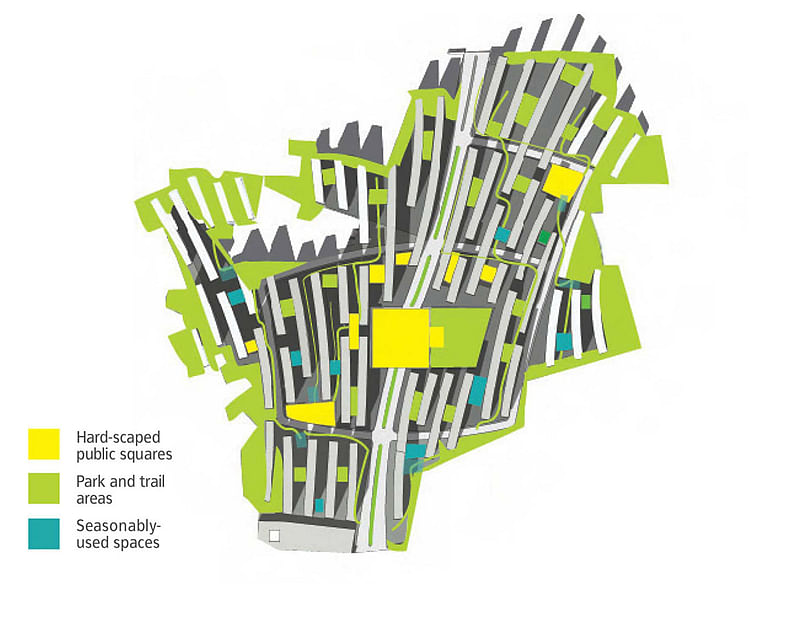
With private courtyards and gardens aligned with the spaces between buildings and bioswales preventing potential water overflow, this bio-integration of architecture and natural landscape will define a new development paradigm for Bangladesh that maximizes density, value and returns, both ecologically and economically. Exhibiting sustainable designs that embrace vernacular landscapes, Green Leaf architecture draws from the lushness of the Bengali landscape and gives both beauty and function back to its surroundings.

Find more diagrams and floor plans of the residential units in the image gallery below.
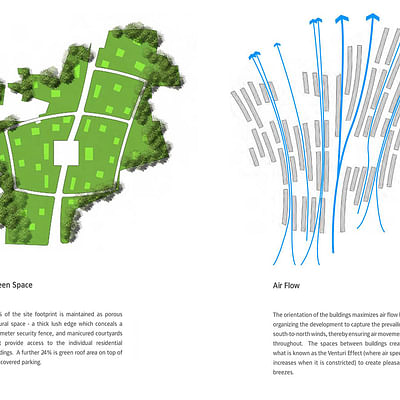
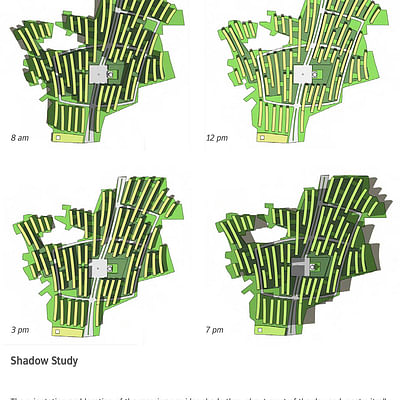
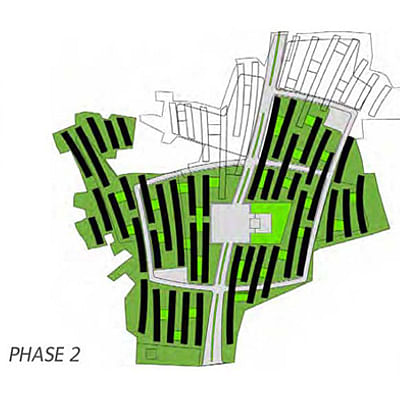

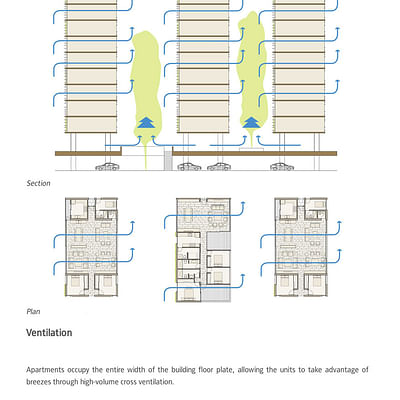
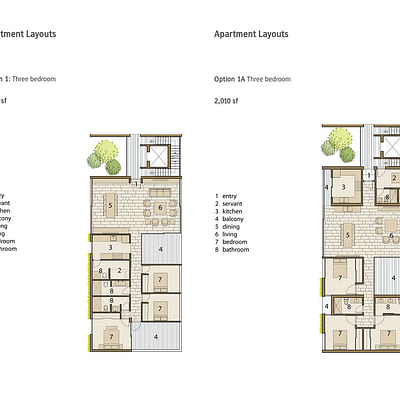
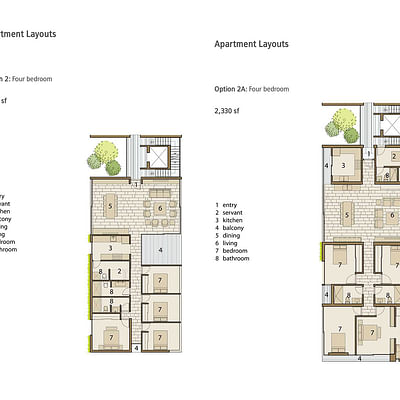

Share
0 Comments
Comment as :